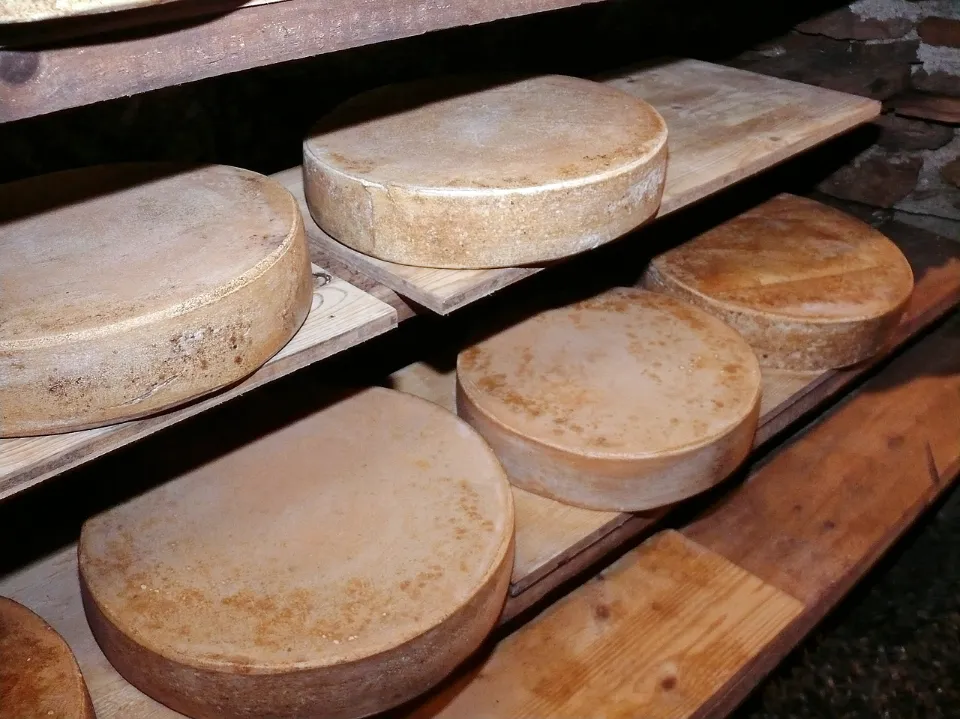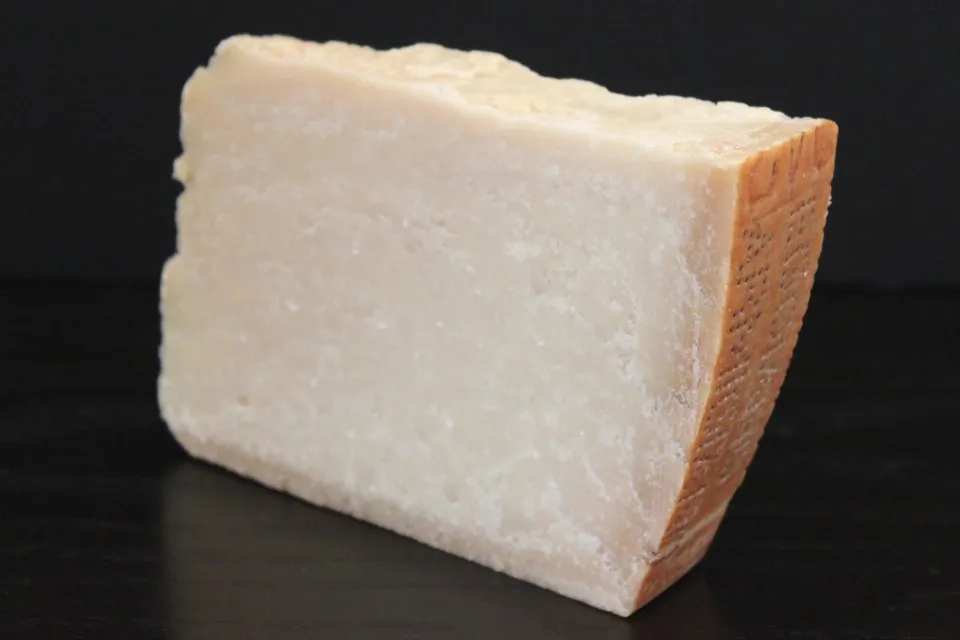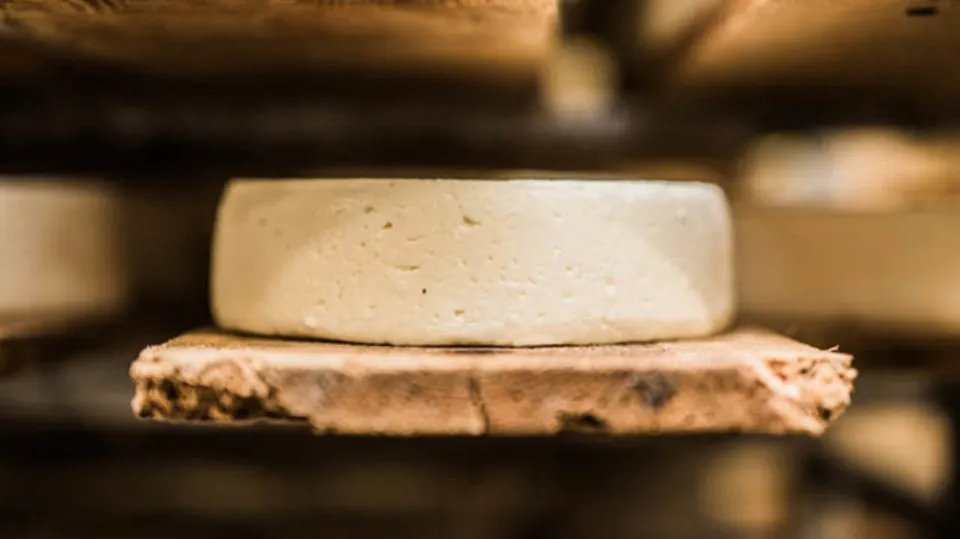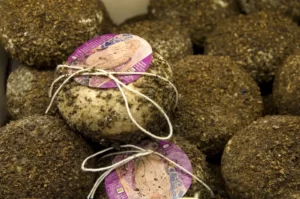Although selling raw milk cheese is illegal in the United States, it doesn’t mean that raw milk cheese is unhealthy in nature.
Throughout history, raw milk has been the prime ingredient for great cheeses because it is full of rich flavor compounds and probiotics unmatched by pasteurized alternatives. It has a unique flavor that pasteurized cheese can’t catch up with.
In this post, I’ll show you what raw cheese is, how it’s made, if it’s safe to eat, and more information.
What is Raw Cheese?
Since ancient times, cheese has been produced using only raw, unpasteurized milk. This type of cheese is known to be exceptionally flavorful and probiotic-rich.
Casein and whey are two of the proteins found in milk. When milk begins to curdle, bacteria consume the lactose sugars and convert them to lactic acid, which separates the casein proteins into lumps. This also causes the milk to smell sour and the whey proteins to turn into that familiar watery white liquid.

However, traditional cheesemaking makes more use of the environment’s native bacteria. Many factories use their own bacteria strains and an enzyme called rennet to speed up this process. The casein curds are divided into small pieces and heated to strain even more whey out after the whey has been removed. The remaining curds are then shaped by pressing them into the desired shape, and they are left to dry and age for however long the cheesemaker desires.
What’s the point of pasteurization, then, if the only distinction between raw cheese and pasteurized cheese is the type of milk used to make each?
What is Pasteurization?
Pasteurization, a health procedure that involves heating and cooling milk to eradicate any harmful bacteria, was created in 1822.
It rapidly rose to prominence in the dairy industry during the famous “swill milk” scandal in the 1850s, when dairy producers were feeding their cows rotten grain and then using milk that was off-colored and bad along with white chalk coloring to make spoiled raw cheese that passed as healthy — this led to over 8,000 children dying from unsafe cheeses.
However, cheese manufacturing facilities today are much cleaner and undergo routine contamination testing. Additionally, they use milk from healthier cows, so there is very little chance that a bad bacteria strain will still be present in the cheese.
So, while sometimes necessary, the notion that unpasteurized milk products are harmful is outdated, and the pasteurization process also destroys a significant amount of nutrients and flavor compounds that we lose out on.

Is It Safe to Eat Raw Cheese?
For most people, yes. As long as the cheese is made from good milk in a clean facility, the risks of infection are extremely low.
For context, the United States reported less than 1,000 cases of illness caused by raw milk products between 1998 and 2017. Furthermore, any cheese that is sold at the market but isn’t labeled as pasteurized has still undergone the 60-day aging process.
However, the CDC still advises against eating raw cheese if you have a weakened immune system, are pregnant, nursing, have a child, are elderly, have a chronic illness, or are a member of any of these groups.
Is Raw Cheese Good for You?
Cheese is a whole food that, when consumed in moderation, is generally healthy when part of a healthy diet. Additionally a good source of calcium, fat, probiotics, and protein is raw cheese.
Additionally, eating cheese made from high-quality, grass-fed milk provides you with additional nutrients like omega-3 fatty acids and vitamin K-2.
If you can tolerate moderate amounts of cheese and aren’t lactose intolerant, allergic to casein, or sodium sensitive, you should be fine.

Is It Legal to Buy Raw Cheese?
How raw the conversation is will determine the answer.
All raw cheese that hasn’t been aged at least 60 days at 35 degrees F is now forbidden by the FDA. This was passed in reference to a study that revealed that listeria, salmonella, and E begin to be killed by the salts and acids found in raw milk cheese around sixty days after it is made. coli.
So long as you let the cheese mature, you should be okay. At some point, most of us have probably consumed raw cheese; however, this cheese has been aged for at least 60 days. So any cheese you buy in the grocery store that says “raw” on it or doesn’t have the pasteurized label has been aged at least sixty days. It is still prohibited in the United States to sell raw cheese that is older than 60 days, which many cheesemakers contend is where the majority of the flavor is found.
In 13 states, as of April 2016, buying raw milk in a store is legal. 17 states only permit raw milk sales on farms. 8 of the states that prohibit sales allow acquisition of raw milk only through “cow-share” agreements — and in 20 other states, all sales of raw milk are prohibited[*].
Even though raw milk cheese will be aged if it is sold commercially, the likelihood of finding it increases the more relaxed a state you are in.
Does Raw Cheese Taste Different?
Oh, yes. It’s a little tricky to explain, but since many of the beneficial bacterial strains are eliminated during pasteurization, raw cheese is brimming with the bacterial species and flavoring ingredients particular to the region in which it was produced. Since raw cheese is bacterial in nature, it absorbs a lot of the flavor of the place it was produced, which is what makes it such an intriguing food.
Additionally, raw cheese that hasn’t been aged for sixty days or more is infamously soft and pungent. One experience that everyone should have is spreading a soft raw cheese on warm bread.
Don’t hesitate — just try it.
You must try raw cheese, whether it is older than the legal limit of 60 days or not. Until you take that first bite, you won’t realize how good it is.

Does Raw Cheese Need to Be Refrigerated?
It depends on the type of cheese you get and how old the cheese is when you receive it. Cheese was created as a way to preserve milk[*], and people have been eating it for much longer than refrigeration has existed.
Soft cheeses like cream cheese, goat cheese, cottage cheese, and shredded need to be refrigerated, according to the USDA. Hard cheeses like cheddar and block varieties don’t necessarily need to be refrigerated, but they will keep much longer if they are.
Hard cheeses should be kept in the refrigerator for up to six months if they are unopened and for about a month if they are. A week or two is about right for soft cheeses.
There are other considerations besides whether something is refrigerated or not. The shelf life and flavor of the cheese are affected by a number of factors, including humidity, fridge temperature, air circulation, and more.
Bottom Line
Raw cheese is made from raw, unpasteurized milk and is known to be deeply flavorful and rich in probiotics. For most people, it’s safe to have raw cheese made in a clean facility. So don’t hesitate, just have a try on raw cheese now!
Related Reading
Why We Can Eat Moldy Blue Cheese
Where is Tillamook Cheese Made
When Can You Introduce Cheese to Your Baby
FAQs
What Is the Difference in Raw Cheese And Regular Cheese?
Milk that has been pasteurized produces a cheese that stays more stable; each wheel per type of cheese offers consistent texture and flavors. By comparison, a raw-milk cheese is alive and constantly changing as it matures.
Why Is Raw Cheese Banned In US?
Bacteria is essential for the creation of many cheeses especially blue cheeses so this may seem a little ridiculous to cheese fans outside of the USA. The FDA bans French cheeses like Roquefort because E. coli bacteria is present, even though it is harmless version.
Why Is Raw Cheese Better for You?
Cheese made from raw milk has a deeper flavor and a higher nutritional value than pasteurized cheeses. Healthy raw milk adds good bacteria to your digestive system and brings its own package of digestive enzymes with it that help to digest sugars, fats, and proteins.


